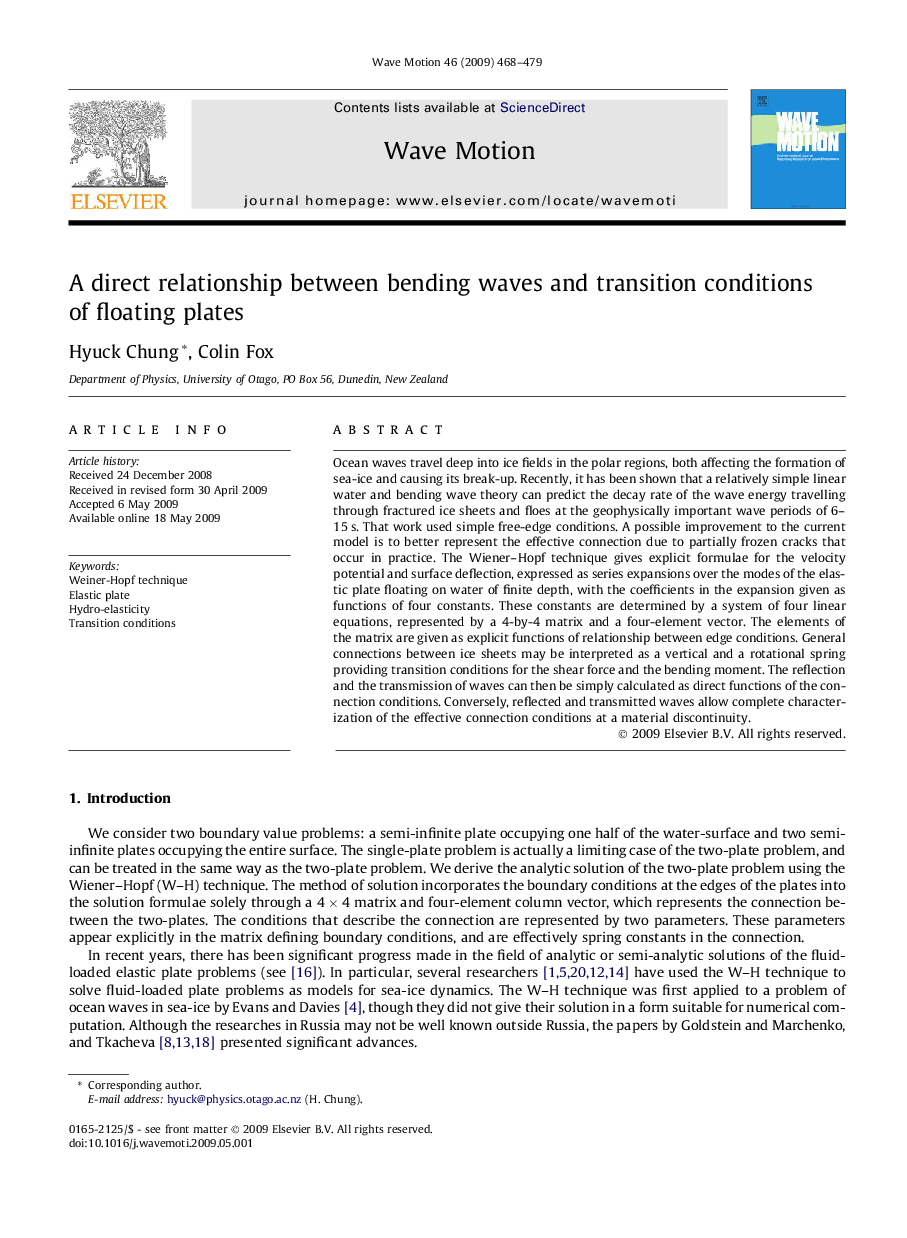| Article ID | Journal | Published Year | Pages | File Type |
|---|---|---|---|---|
| 1900786 | Wave Motion | 2009 | 12 Pages |
Ocean waves travel deep into ice fields in the polar regions, both affecting the formation of sea-ice and causing its break-up. Recently, it has been shown that a relatively simple linear water and bending wave theory can predict the decay rate of the wave energy travelling through fractured ice sheets and floes at the geophysically important wave periods of 6–15 s. That work used simple free-edge conditions. A possible improvement to the current model is to better represent the effective connection due to partially frozen cracks that occur in practice. The Wiener–Hopf technique gives explicit formulae for the velocity potential and surface deflection, expressed as series expansions over the modes of the elastic plate floating on water of finite depth, with the coefficients in the expansion given as functions of four constants. These constants are determined by a system of four linear equations, represented by a 4-by-4 matrix and a four-element vector. The elements of the matrix are given as explicit functions of relationship between edge conditions. General connections between ice sheets may be interpreted as a vertical and a rotational spring providing transition conditions for the shear force and the bending moment. The reflection and the transmission of waves can then be simply calculated as direct functions of the connection conditions. Conversely, reflected and transmitted waves allow complete characterization of the effective connection conditions at a material discontinuity.
